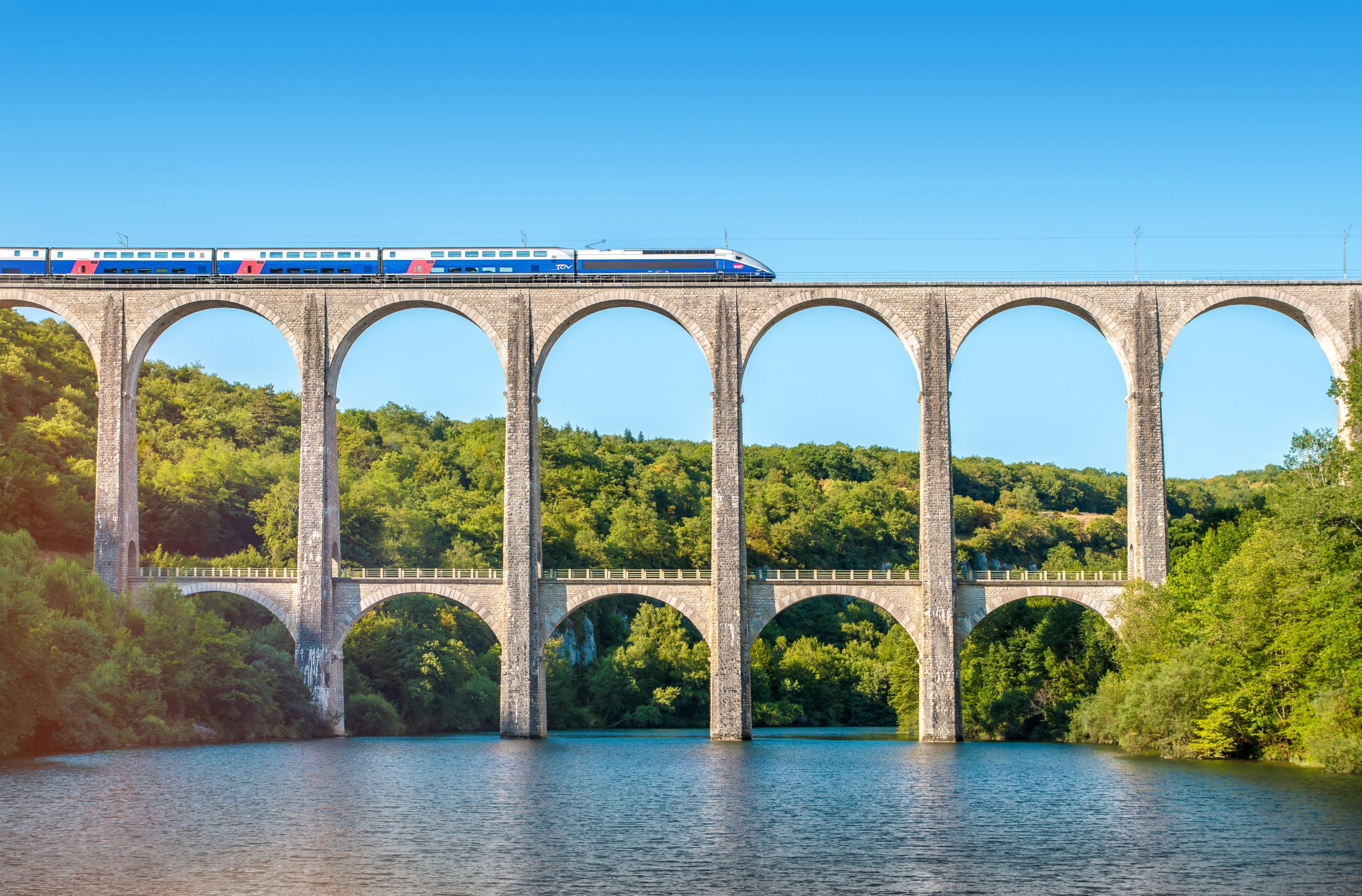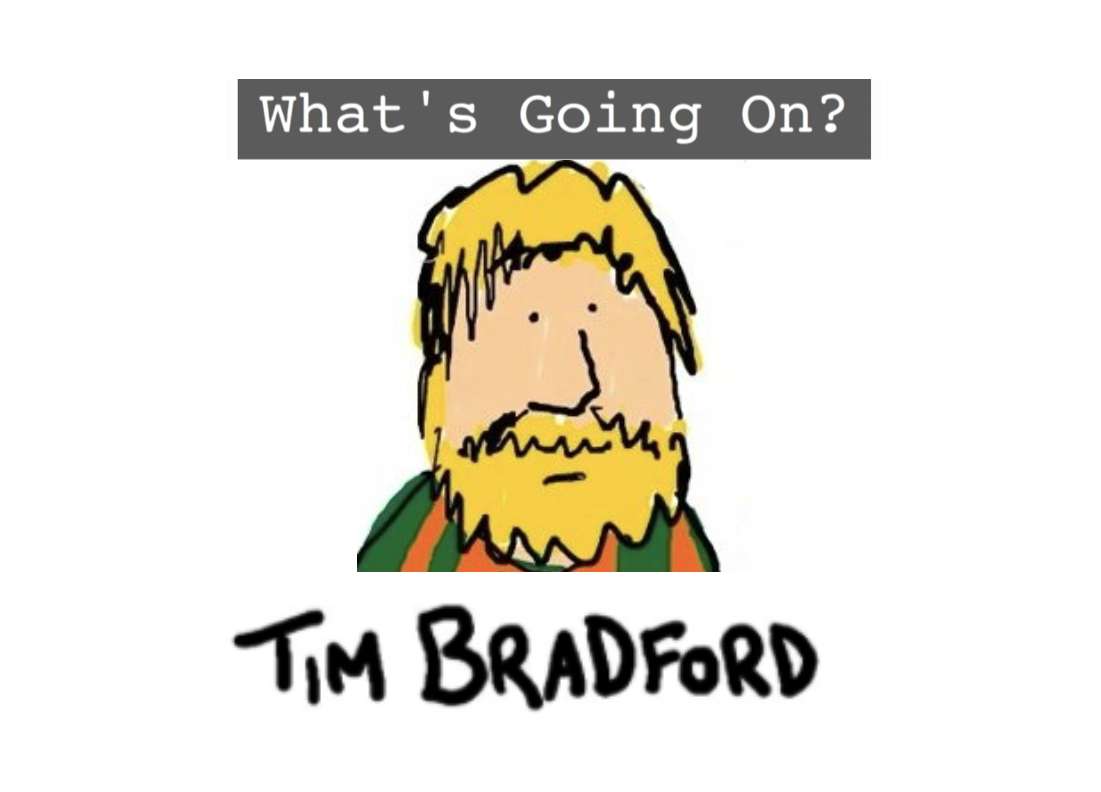
Credit: Gregory Dubus/Getty Images
This is the European Year of Rail, 12 months of initiatives organised by the European Commission to highlight the sustainable attributes of rail travel and boost passenger numbers. There is a Twitter hashtag (#EUYearofRail) and several supportive statements.
“Our future mobility needs to be sustainable, safe, comfortable and affordable,” says Adina Valean, the commissioner for transport. “Rail offers all that and much more!” (Her exclamation mark). “The time is now!” adds an accompanying Commission website. “Hop on!” (Its exclamation marks, too).
The driving force behind the enthusiastic campaign – a little overlooked despite all the gusto, with travel in general so disrupted by the pandemic – is the belief that a switch to international trains is crucial if the EU has any hope of meeting its target of climate neutrality, or zero net emissions, by 2050. A great many figures are given to support the case being made.
Within the EU, railways are responsible for 0.4% of transport-related greenhouse gas emissions, while road traffic accounts for 71.8% and airlines for 13.2%. Overall, 25% of emissions across the EU are transport-related.
Yet a meagre 7% of passenger journeys in Europe are made by train, while only 11% of goods are transported by rail. The European Year of Rail’s message is simple: travel by train, if you want to be green.
With those at the top pushing for change, it might seem only a matter of time before countries get their act together and create a marvellous Europe-wide rail network. One day soon, if plans fall into place, we will surely all be able to go online and buy tickets from, say, Prague to Lyons, Rome to Berlin, London to Budapest – or whatever route we choose – and fast, direct trains, or perhaps trains with one easy connection, will flash up with fares and journey times that are competitive with budget airlines such as Ryanair and Easyjet. Let the train take the strain: no more dirty fumes pumped into the stratosphere.
But it’s not quite as easy as that, say transport experts, who have been wrestling with the subject for years.
For a start, if it were so straightforward why has it not happened already? As far back as the 1950s, attempts have been made to create reliable high-speed pan-European links, with the short-lived Trans Europe Express the closest the Continent has yet managed, its fast trains at one point connecting 130 cities.
But the TEE soon fizzled out, largely because services were pitched at business-class passengers rather than those from all walks of life. By the 1990s it was finished, although during the late 20th century period that followed national rail operators began to realise that international high-speed trains with classes affordable to all – not just business folk on expenses and the rich – might just work. Why not go one step better than the TEE and offer fares suited to everyone? So began the occasional cross-border direct services from, for example, Paris to Brussels, which made financial sense to rail operators.
This was, however, a step backwards from grand plans to unite Europe with a spider’s web of efficiently run trains that the pioneers had been dreaming of back in the 1950s.
Then came the rise of low-cost airlines booked over the fledgling internet… and a further setback. How could trains possibly compete with 1p fares? Yes, those prices – only ever available in flash sales – did not include taxes and have since steadily risen. But dirt-cheap fares have remained, as a cursory glance online at almost any time will show.
Fancy some sunshine on the French riviera? Easyjet tickets from London to Nice this month were as low as £49 return, while the price of the equivalent trip by train was about £200 via Eurostar and the journey times one hour 50 minutes by plane or nine hours by train.
All of which make the hopes of some in Europe of a modern version of the Trans Europe Express, perhaps named TEE 2.0 (championed by the German federal minister for transport, Andreas Scheuer, no less), seem on the face of it to be something of a pipedream. And this is not even touching upon the technical difficulties of creating cross-border services.
Transport experts quickly point to the huge logistical barriers to creating a coordinated European rail network. For a start, trains from one country may not be compatible with the power settings of their neighbours. Next up, overhead lines may be set at different tensions, making onward movement impossible.
On top of all this, signalling systems may not correlate, meaning drivers must retrain to learn new settings, with instructions rewritten in multiple languages; a complicated, slow and expensive process, as is configuring trains so they can work using the electrics and wires of more than one nation.
“There are endless issues involved and every country has its own view and own technical standards,” says Alex McWhirter, who has been reporting on railways and aviation for more than 40 years.
Ironically, cross-border train travel may have been easier when McWhirter started out as a cub reporter than it is now, he says. “Back in the 1980s there were ordinary locomotives that could be changed at borders, with the new locomotives carrying on passengers. Now you have ‘train units’ with built-in power in the carriages.” This means that these ‘train units’ have to be changed at borders too – unless the various complicated compatibility issues are resolved: slowing things down so much that any hope of offering a travel time close to flights is impossible.
Quite apart from these impediments, there is another consideration: the surprisingly fraught politics of trains, exacerbated by the high costs of moving along the lines. Every country has ‘track access charges’ that must be paid if a rail operator wishes to use its railways.
These can be steep, ultimately pushing up the price of tickets, making routes unviable. Meanwhile. permission to use a neighbouring country’s tracks also has to be granted, even if the access charges can be borne.
Which trains are allowed in or not is entirely down to each national network operator. In this situation, it could be that a major domestic train company would not be happy to have foreign competition turning up and spoiling its monopolistic conditions – with this point of view pressed on regulators, effectively blocking access to a neighbouring country’s trains.
Add to this a further layer of complication: the huge subsidies that some foreign train operators receive. In France, state-owned SNCF (the Société nationale des chemins de fer français) is currently 40bn euros (£34.2bn) in debt. Given these dire straits, does it want foreign rail operators on its ‘patch’, making matters even more challenging? The answer is clearly “non”.
So the precise reasons for a recent two-year delay for permission for Trenitalia to run a high-speed service between Milan and Paris, for example, are mysterious, yet perhaps not so difficult to work out. Trenitalia’s trains were technically up to the job (although SNFC’s were not in the opposite direction). Recently, Arafer, the French rail regulator, has given the go-ahead, but only after such a hold-up that the wind has been taken out of the sails of the Italian operator’s plans.
“All countries carefully guard their own territory,” says McWhirter. “This can be about technical standards – or simply protectionism.”
The state subsidy of rail companies raises another complication. Where a government has been pumping money into its railways, results are expected on domestic lines first and foremost. Fancy long-haul trains into neighbouring countries are of secondary importance – particularly ‘night trains’, which attract a lot of positive PR for rail companies, but usually run at a loss as passenger numbers are tricky to maintain on all days of the week.
When it comes to performance, governments normally have an eye on the bottom line: how well are its cities connected and commuter trains run? Bear in mind here that even Germany’s Deutsch Bahn, a private company with the Federal Republic of Germany its single shareholder, has 29bn euros of debt.
Add to this concerns that some airports and airlines in Europe are teetering on the brink of failure, especially since the pandemic, and a further political dilemma arises: if cash is pumped into railways to link with neighbouring countries – possibly requiring vast expenditure on compatible rail stock – might the aviation industry suffer yet more? Airports and airlines are obviously lobbying for their corner, arguing that many jobs are at stake. The Netherlands and France own the largest stakes in Air France-KLM, while the German state is the biggest investor in Lufthansa, having bailed out the airline with $10bn last year.
All of this horse-trading is quite apart from immediate concerns over delays to trains caused by increased checking of passports (due to immigration worries) and Covid documentation at border controls. So are expectations of a wonderful spiderweb of lines across simply hopeless? Is the European Year of Rail just another gimmicky campaign that will come and go with no real effect?
Not quite. Some real progress has been made over the past 12 months, particularly when it comes to night trains. Austria’s state railway company, OBB, has been leading the way with cutting edge Nightjet stock unveiled in Vienna in February to be used on routes from Vienna and Munich to Milan, Venice and Rome to be launched by the end of next year.
Meanwhile, from December this year, routes are already scheduled between Vienna, Munich and Paris as well as Zurich, Cologne and Amsterdam. These services have required cooperation between the rail operators of Germany, Austria, France and Switzerland in a move some see as a forerunner of what is required if aims to reduce transport emissions are really going to work in the years to come.
Elsewhere, Snalltaget, a Swedish operator, is beginning night train routes from Sweden to Germany later this year – departing from Malmo at 21.37 and arriving in Berlin at 08.57, with fares from £105, one-way. RegioJet, a private Czech company, is due to offer journeys from Prague to Rijeka in Croatia on a “five-country night train” (journey times and fares not set yet).
While in France, plans are in the pipeline for Midnight Trains, backed by Xavier Neil, the billionaire co-owner of Le Monde, to begin “hotels on rails” between Paris and Belgium, Germany, Denmark, Spain, Portugal, England and Scotland by 2024.
Adrien Aumont, joint backer of the venture, says: “At the moment there is no alternative for medium distance travel [other] than flights or a bad night train. And the only way we can rival planes is to reinvent the train experience.”
In Italy, another scheme is being drawn up for a ‘Dolce Vita’ retro sleeper train on ten routes covering 10,000 miles of tracks in the country – appealing principally to the leisure traveller, not those whose main goal is to get from A to B.
The service is due to begin in 2023 opening up “a new frontier in luxury hospitality”. Again, as with RegioJet and Midnight Trains, fares have not been released, though they will no doubt be a far cry from Wizz Air prices. Orient Express-style tickets are more likely (the current price of an overnight Paris-Venice ride is from an eye-watering £2,600 per person, meals thrown in).
All of which sounds fine and dandy, as far as night trains are concerned: someday soon there will probably be many more sleeper trains in Europe, even if a few of them will be the preserve of the super-rich.
But some rail experts have their doubts about the likelihood of a widespread growth of such services for the common traveller. This is mainly due to a current dearth of sleeper carriages, which one leading rail commentator, Jon Worth, an academic at the College of Europe, based in Bruges, says would require an EU plan to procure a “massive fleet of night train carriages” to overcome.
Were such a scheme launched, these carriages could then be leased to private operators, making dreams of a network of sleeper trains affordable for all more realistic.
But how likely is this? And are we still really a very long way from wonderful visions of simple, affordable and fast train rides across the Continent? Probably, although the European Commission’s project has certainly at least helped raise awareness of the need to switch to rail for green reasons and, in one instance, witnessed progress that could point to lower fares and more connectivity in the future.
In Spain, regulators have allowed both SNCF (on new Ouigo trains) and Trenitalia (which is investing the enormous sum of 797m euros on new rail stock) to use the country’s lines. The immediate result is huge competition on the route between Barcelona and Madrid with Renfe (Red Nacional de los Ferrocarriles Espanoles) responding with cut-price services of its own on its new budget Avlo services.
Fares are from around £8 one-way and run as “the rail equivalent of a low-cost airline”, says McWhirter, with “tickets sold online at a low headline price, with the fare itself inflated by extra charges which you may or may not wish to purchase [such as] wifi, seat selection and extra luggage”.
This move in Spain suggests a way forward, with more fluidity on Europe’s lines and perhaps greater technical compatibility in the future. Meanwhile, a decision in France to ban Air France flights for journeys that can be made in two and a half hours or less (with some exceptions) is another positive sign.
In Germany, politicians have pledged to cut 10.5m metric tonnes of carbon emissions each year by encouraging rail travel. And a 44km tunnel through the Alps due to be completed in 2028, costing 8.7bn euros, will reduce the journey time from Bolzano in Italy to Innsbruck in Austria from two hours to 50 minutes (there are hopes eventually for a high-speed line using this to link between Berlin and Rome).
Yet all of this is still extremely early days in the journey to a comprehensively linked network of international trains in Europe and, even though the environmental case for switching to rail seems irrefutable (a high-speed rail journey between Vienna and Paris, for example, emits 6g of carbon emissions per passenger compared to 133g for a flight), money ultimately talks.
Fares still have a long way to fall even to begin to challenge those of Europe’s many low-cost carriers.
The European Year of the Train comes during a tricky time for getting about in general – maybe, however, it could just be a turning point. Might a new golden age of trains be around the corner? Perhaps, as Bob Dylan almost sang, fast trains on new tracks are comin’ up around the bend.
Tom Chesshyre is author of Slow Trains Around Spain: A 3,000-Mile Adventure on 52 Rides (Summersdale)


